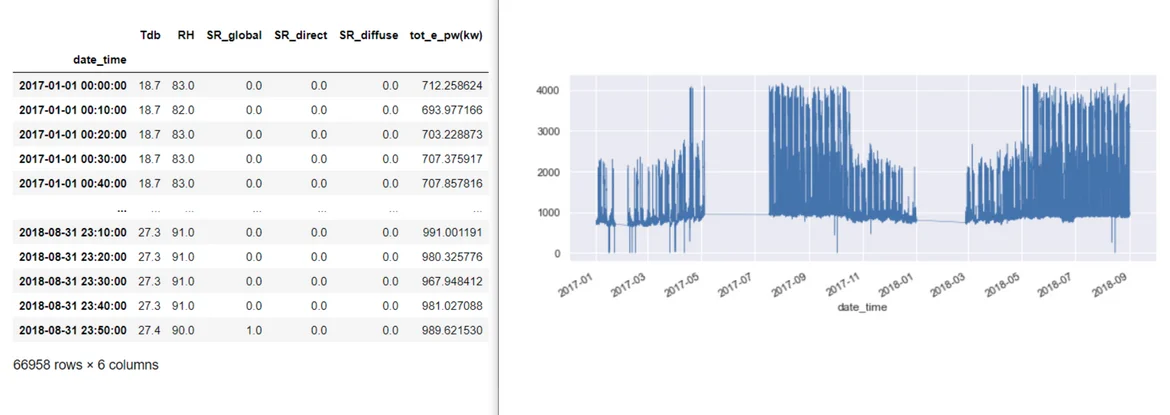ML Methodology for Time Series Problem on Energy Consumption
Hi, I am working on a machine learning problem. My question is regarding the dataset and how best to approach the problem of energy consumption prediction. I am trying to predict building energy consumption with a dataset consisting of 66,958 records. There are 7 variables including...
date_time: Date variable Tdb: Outdoor temperature RH: Relative Humidity SR_global: Solar Radiation (Global) SR_direct: Solar Radiation (Direct) SR_diffuse: Solar Radiation (Diffuse) tot_e_pw(kw): Total energy consumption
Each record is 10 minute intervals and spans between 01/01/2017 00:00 to 31/08/2018 23:50. However, there are some significant gaps in the data, I have typed up the major periods where there is data below. There is no data outside of these date times.
BLOCKS OF DATA:
1st Major Period: 01/01/2017 00:00 - 22/01/2017 23:50
2nd Major Period: 06/02/2017 00:00 - 04/05/2017 23:50
3rd Major Period: 17/07/2017 00:10 - 31/12/2017 23:50
4th Major Period: 26/02/2018 00:00 - 31/08/2018 23:50
I want to know how I should approach this problem. Do I deal with this as a time series prediction problem or do I approach it differently? If I approach this differently then what kind of machine learning models should I use?
The link for the dataset is https://github.com/adamusmani95/Energy-Consumption-Prediction/blob/main/full_data.csv

Hi Adam,
thanks for reaching out and great to see a student with a passion for tackling machine learning tasks! Unfortunately, your questions goes outside the scope of the machine learning course.
But if your question is related to time series data and analysis, might I suggest you take a look at another one of our courses:
Time Series Analysis in Python Course | 365 DataScience
The course created by our own 365 Vik focuses exclusively on analysing time series data.
Hope this helps!
Best,
365 Eli